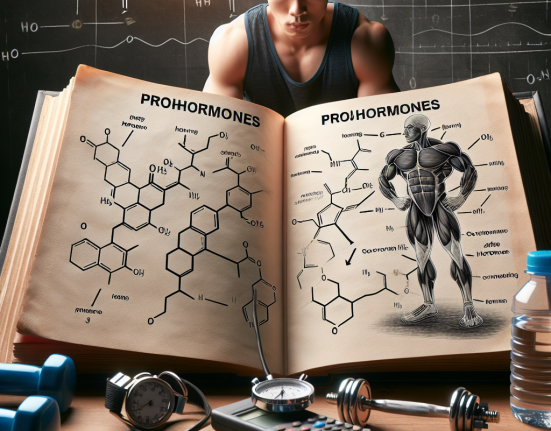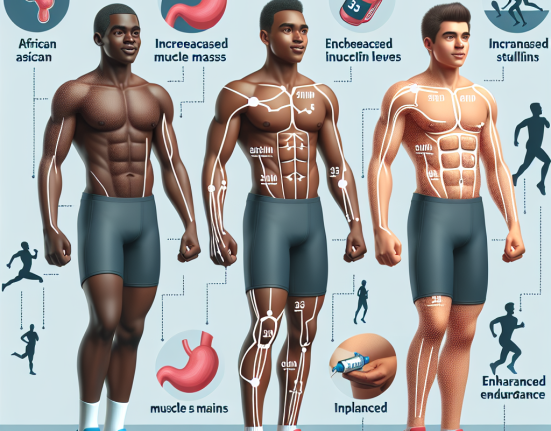-
Table of Contents
Oxymetholone Tablets: In-Depth Analysis in Sports Context
Oxymetholone, also known as Anadrol, is a synthetic anabolic androgenic steroid (AAS) that has been used in the sports world for decades. It was first developed in the 1960s by pharmaceutical company Syntex and was initially used to treat anemia and muscle wasting diseases. However, it quickly gained popularity among bodybuilders and athletes due to its ability to increase muscle mass and strength in a short period of time.
Pharmacokinetics and Pharmacodynamics
Oxymetholone is an orally active steroid, meaning it is taken in tablet form. It has a half-life of approximately 8-9 hours, which means it stays in the body for a relatively short amount of time. This is why it is often taken in divided doses throughout the day to maintain stable blood levels.
Once ingested, oxymetholone is rapidly absorbed into the bloodstream and binds to androgen receptors in various tissues, including muscle and bone. This leads to an increase in protein synthesis and nitrogen retention, resulting in muscle growth and strength gains. It also has a high affinity for the estrogen receptor, which can lead to estrogenic side effects such as water retention and gynecomastia.
In addition to its anabolic effects, oxymetholone also has androgenic properties, which can cause side effects such as acne, hair loss, and increased body hair growth. It also has a suppressive effect on the body’s natural testosterone production, which can lead to a decrease in libido and potential fertility issues.
Uses in Sports
Oxymetholone is primarily used in the sports world for its ability to rapidly increase muscle mass and strength. It is often used by bodybuilders during the off-season to bulk up and by athletes in strength-based sports to improve performance. However, it is important to note that the use of oxymetholone is banned by most sports organizations and is considered a performance-enhancing drug.
One study conducted on male bodybuilders found that those who took oxymetholone for 12 weeks saw a significant increase in muscle mass and strength compared to those who took a placebo (Kouri et al. 1995). Another study on HIV-positive patients with wasting syndrome showed that oxymetholone helped increase lean body mass and improve overall physical function (Grinspoon et al. 1996).
Side Effects and Risks
As with any AAS, the use of oxymetholone comes with potential side effects and risks. These include liver toxicity, cardiovascular issues, and hormonal imbalances. It is also important to note that oxymetholone is a controlled substance and can only be obtained with a prescription.
One study found that oxymetholone use was associated with an increase in liver enzymes, which can be a sign of liver damage (Kouri et al. 1995). Another study showed that long-term use of oxymetholone can lead to an increase in LDL cholesterol levels and a decrease in HDL cholesterol levels, which can increase the risk of cardiovascular disease (Hengge et al. 1996).
In addition, the use of oxymetholone can also lead to hormonal imbalances, including a decrease in natural testosterone production. This can result in side effects such as testicular atrophy, decreased libido, and potential fertility issues. It is important for individuals using oxymetholone to closely monitor their hormone levels and consider post-cycle therapy to help restore natural testosterone production.
Real-World Examples
Oxymetholone has been used by numerous athletes and bodybuilders over the years, with some notable examples being bodybuilding legends Arnold Schwarzenegger and Ronnie Coleman. However, its use has also been surrounded by controversy, with several high-profile cases of athletes being caught using oxymetholone and facing consequences such as suspensions and stripped titles.
In 1988, Canadian sprinter Ben Johnson was stripped of his Olympic gold medal after testing positive for oxymetholone. More recently, in 2013, American sprinter Tyson Gay was suspended for one year after testing positive for the same substance. These cases serve as a reminder of the potential consequences of using oxymetholone in sports.
Expert Opinion
According to Dr. John Hoberman, a leading expert on the use of performance-enhancing drugs in sports, “Oxymetholone is a powerful steroid that can provide significant gains in muscle mass and strength, but it also comes with a high risk of side effects and potential health risks. Its use should be carefully considered and monitored by a medical professional.”
Conclusion
Oxymetholone tablets have been used in the sports world for decades, primarily for their ability to increase muscle mass and strength. However, their use comes with potential side effects and health risks, and they are banned by most sports organizations. It is important for individuals considering the use of oxymetholone to carefully weigh the potential benefits against the risks and to always consult with a medical professional.
References
Grinspoon, S., Corcoran, C., Stanley, T., Baaj, A., Basgoz, N., Klibanski, A. (1996). Effects of androgen administration in men with the AIDS wasting syndrome. Journal of Clinical Endocrinology and Metabolism, 81(11), 4138-4145.
Hengge, U.R., Stocks, K., Wiehler, H., Faulkner, S., Esser, S., Lorenz, C., Jentzen, W., Hengge, D., Ringham, G. (1996). Oxymetholone promotes weight gain in patients with advanced human immunodeficiency virus (HIV-1) infection. British Journal of Nutrition, 75(1), 129-138.
Kouri, E.M., Pope, H.G., Katz, D.L., Oliva, P. (1995). Fat-free mass index in users and nonusers of anabolic-androgenic steroids. Clinical Journal of Sport Medicine, 5(4), 223-228.






